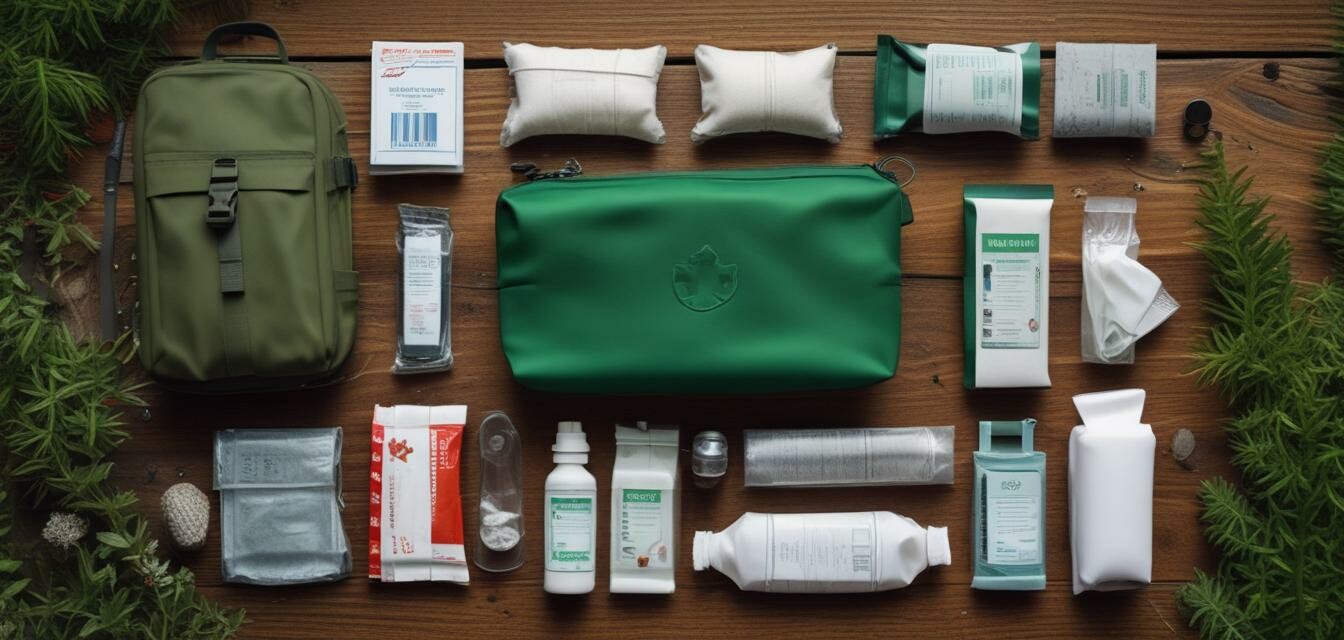
Building a Backpacking First Aid Kit
- Tailor your first aid kit to the specific outdoor activities you'll be engaging in.
- Include essential items like band-aids, antiseptic wipes, and pain relievers.
- Regularly check and replace expired items in your first aid kit.
- Consider adding specialized supplies based on your adventure location.
Outdoor adventures require proper gear, and a well-equipped backpacking first aid kit is essential for safety. Whether you’re hiking, camping, or on a multi-day trek, packing a first aid kit tailored to your adventure can provide peace of mind. In this guide, we will walk you through everything you need to know to build a comprehensive first aid kit that can handle most outdoor scenarios.
Why You Need a First Aid Kit
Accidents can happen, even in the great outdoors. A first aid kit is crucial for addressing minor injuries, managing emergencies, and ensuring a safe adventure. Here are some reasons why it's essential:
- Immediate response: Be prepared to treat injuries on the spot.
- Peace of mind: Gain confidence knowing you have essential supplies.
- Preventing infection: Clean and protect wounds effectively.
Essential Items for Your Backpacking First Aid Kit
Here’s a list of basic items you should include in your first aid kit:
| Item | Purpose |
|---|---|
| Adhesive bandages | Cover cuts and scrapes |
| Gauze pads | Control bleeding |
| Antiseptic wipes | Clean wounds |
| Tape | Secure gauze and dressings |
| Pain relievers (e.g., ibuprofen) | Relieve pain and reduce inflammation |
| Scissors | Cut tape, gauze, or clothing if necessary |
| Thermometer | Monitor body temperature |
| First aid manual | Reference for handling specific situations |
Tailoring Your Kit to Your Adventure
Your first aid kit should be adaptable to your specific activities. Consider the following when tailoring your kit:
For Hiking
- Include blister treatment (e.g., moleskin).
- Pack extra allergy medications if you’re allergic to pollen.
For Camping
- Include bug bite relief treatments.
- Consider adding a snake bite kit if camping in areas where snake encounters are common.
For Traveling
- Pack nausea medication for long journeys.
- Include any personal medications required during travel.
How to Pack Your First Aid Kit
Proper packing of your first aid kit can make access easier during emergencies. Follow these tips:
- Use a waterproof bag or container to keep items safe from moisture.
- Group items together logically (bandages in one section, medications in another).
- Label containers to find items quickly in an emergency.
Regular Maintenance of Your First Aid Kit
Maintaining your first aid kit is crucial for its effectiveness. Here’s how:
Check Expiration Dates
Regularly review the expiration dates of items, especially medications and antiseptics. Replace them as needed to ensure the kit is always ready for use.
Restock After Use
After each adventure, make sure to replenish any supplies used during your trip.
Additional Tips for Outdoor Safety
Stay Informed
- Learn basic first aid and CPR.
- Familiarize yourself with common outdoor risks in your area.
Plan Ahead
- Know the nearest medical facility's location.
- Create a communication plan in case of emergencies.
Conclusion
A reliable first aid kit is your first line of defense during outdoor adventures. By carefully choosing the right supplies and tailoring your kit to your specific activities, you can ensure a safer experience in the wilderness. Make sure to check your kit regularly and keep it stocked for immediate access when you need it most.
Learn More
If you want to expand your skills and knowledge for your outdoor adventures, check out our Outdoor adventure tips blog category for more helpful advice!
Pros
- Peace of mind knowing you're prepared for emergencies.
- Adaptable for a wide range of outdoor activities.
- Encourages responsibility and awareness during adventures.
Cons
- Can add weight to your backpack.
- Requires regular maintenance to stay effective.